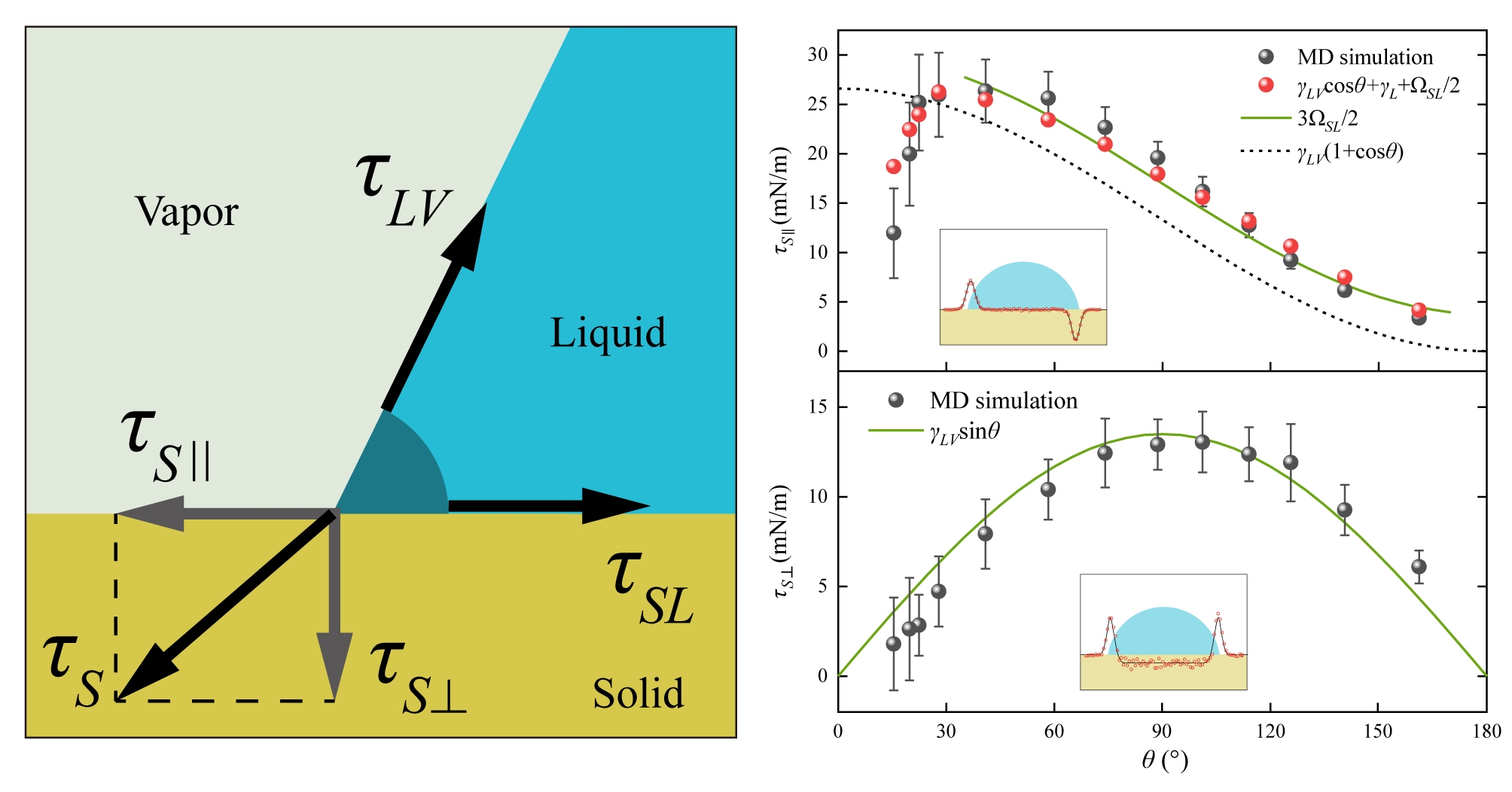[ Instrument Network Instrument R & D ] In 1805, British scientist Thomas Young described the quantitative relationship between interfacial tension and contact angle while studying wetting and capillary phenomena. For more than two hundred years, the Young's equation has become one of the most basic theories in the field of wetting. Although the equation can be derived based on the thermodynamic energy minimization method, researchers have been working to explain the Young's equation from a mechanical point of view and verify its validity at the nanoscale.

There are still many key scientific problems in this field that need to be solved urgently. On the one hand, as a key factor controlling the dynamics of droplets, the capillary force acting on the solid-liquid-gas three-phase contact line is not explicitly reflected in the Young's equation, and it is easy to interact with The concept of interfacial tension is confusing. On the other hand, because it is difficult to accurately measure the solid-liquid and solid-air interface tension in experiments, the verification of the Young's equation has been controversial.
Recently, the team of the School of Engineering Science, University of Science and Technology of China, and the Key Laboratory of Material Mechanics Behavior and Design of the Chinese Academy of Sciences have studied the microscopic origin of the capillary force at the solid-liquid interface, revealed the mechanism of force equilibrium at the contact line of the droplet, and gave a mechanical perspective. A reasonable explanation of Young's equation is given.
Young's equation describes the relationship between the solid-gas, solid-liquid, liquid-gas interface tensions γsg, γSL, γLg and contact angle θ, also known as the wetting equation. The expression is: γsg-γSL = γLgCOSθ, which is suitable for uniform surfaces Equilibrium with no special effect between solid and liquid. One of the basic equations of interface chemistry.
In response to the above challenges, researchers at the University of Science and Technology of China have analyzed the physical meaning of interfacial tension from the microscopic level and decomposed it, and found a new method to quantitatively describe the capillary force at the solid-liquid-gas three-phase contact line. The difference and connection between this capillary force and interfacial tension. On this basis, the researchers established a theoretical model describing the capillary force balance at the droplet contact line, and gave a mechanical explanation of the Young's equation. This theory has been verified by molecular dynamics simulation results.
Molecular dynamics is a comprehensive technology that combines physics, mathematics, and chemistry. Molecular dynamics is a set of molecular simulation methods. This method mainly relies on Newtonian mechanics to simulate the motion of a molecular system, in order to extract samples from a system composed of different states of the molecular system, and then calculate the configuration integral of the system, Based on the results of the type integral, the thermodynamic quantities and other macroscopic properties of the system are further calculated.
The results also show that: at small contact angles, the solid-liquid and liquid-air interfaces overlap at the contact line, and the liquid ordered layered structure on the solid surface has an important effect on capillary forces. This research not only provides a new understanding for deep understanding of many phenomena of interfacial wetting, but also has important scientific significance in the application fields of micro-nano flow control chip design and enhanced recovery of low permeability reservoirs.
Source: Encyclopedia, University of Science and Technology of China
Sports Motorcycle Shock Absorber
rear shock absorber
Chongqing Yuan Innovation Technology Co.,Ltd. , https://www.yuanshoks.com